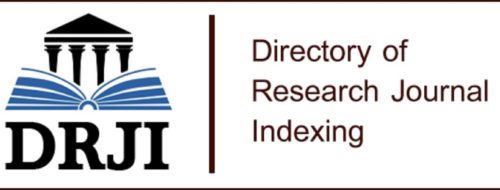TÜRKİYE’DE DOĞRUDAN YABANCI YATIRIMLAR VE EKONOMİK BÜYÜME ARASINDAKİ İLİŞKİLERİN NEDENSELLİK ANALİZLERİ İLE TESTİ
Öz
Bu
çalışmada, DYY ile ekonomik büyüme, istihdam ve sermaye birikimi arasında
nedensellik ilişkileri 1984-2015 dönemi Türkiye ekonomisi için Sims ve DL-VAR
nedensellik yöntemleri ile incelenmiştir. Çalışma ile birlikte DYY girişlerinin
Türkiye ekonomisi üzerine etkisinin belirlenmesi amaçlanmıştır. Analiz sonuçları, ekonomik büyüme ve sermaye
birikiminden, DYY’ye doğru pozitif ve tek yönlü bir nedensellik ilişkisinin
olduğunu, ancak DYY ile istihdam arasında herhangi bir nedensellik ilişkisinin
olmadığını göstermektedir. Aynı zamanda genelleştirilmiş etki-tepki ve varyans
ayrıştırma analizleri de Sims ve DL-VAR nedensellik yöntemleri sonuçlarını
desteklemektedir. Sonuç olarak Türkiye ekonomisinde yaşanan büyüme, ülkeye
gelen doğrudan yabancı yatırımları olumlu yönde etkilemektedir.
Anahtar Kelimeler
DYY Ekonomik Büyüme Sermaye Birikimi Nedensellik Testi Türkiye
Kaynakça
- BİLGİN, Mehmet Hüseyin; Hakan DANIŞ ve Erdem DEMİR; (2008), “Tür-kiye’nin Yabancı Yatırım Ortamının Analizi ve Bazı Öneriler”, İn-ternet Adresi: http://dergipark.ulakbim.gov.tr/mfy/article/view/ 5000160599 /0, Erişim Tarihi: 04.08.2016.
- BRINCIKOVA, Zuzana and Lubomir DARMO; (2014), “The Impact of FDI Inflow on Employment in V4 Countries”, European Scientific Journal, 1, pp. 245-252.
- CHOE, Jong II; (2003), “Do Foreign Direct Investment and Gross Domestic Investment Promote Economic Growth?”, Review of Develop-ment Economics, 7 (1), pp.44-57.
- CHOY, Lennon H. T; Winky K. O. HO and Stephan W. K. MAK; (2009), “On FDI and Domestic Capital Stock: A Panel Data of Chinese Regions”, Building and Real Estate Workshop Paper, The Hong Kong Polytechnic University.
- CRAIGWELL, Roland; (2006), “Foreign Direct Investment and Employ-ment in the English and Dutch Speaking Caribbean”, Conference Paper, Internet Address: http://www.oit.org/wcmsp5/groups/public/---americas/---ro-lima/---sro-port_of_spain/documents/ meetingdocu-ment/wcms_306245.pdf, Date of Access: 22.04.2016.
- ÇEŞTEPE, Hamza; Ertuğrul YILDIRIM ve Melike BAYAR; (2013), “Doğ-rudan Yabancı Yatırım, Ekonomik Büyüme ve Dış Ticaret: Toda-Yamamoto Yaklaşımıyla Türkiye’den Nedensellik Kanıtları”, Ak-deniz İİBF Dergisi, 27, ss.1-37.
- DEĞER, Mustafa Kemal ve Selçuk Ö. EMSEN; (2006), “Geçiş Ekonomile-rinde Doğrudan Yabancı Sermaye Yatırımları ve Ekonomik Bü-yüme İlişkileri: Panel Veri Analizleri (1990-2002)”, Cumhuriyet Üniversitesi İİBF Dergisi, 7(2), ss.121-137.
- DICKEY, David Alan and Wayne Arthur FULLER; (1981), ‘‘Likelihood Ratio Statistics for an Autoregressive Time Series with a Unit Root’’, Econometrica, 49 (4), pp.1057-1072.
- DRITSAKI, Melina; Chaido DRITSAKI and Antonios ADAMOPOULOS; (2004), “A Causal Relationship between Trade, Foreign Direct In-vestment and Economic Growth for Greece”, American Journal of Applied Sciences, 1 (3), pp.230-235.
- EKİNCİ, Aykut; (2011), “Doğrudan Yabancı Yatırımların Ekonomik Bü-yüme ve İstihdama Etkisi: Türkiye Uygulaması (1980-2010)”, Es-kişehir Osmangazi Üniversitesi İİBF Dergisi, 6 (2), ss.71-76.
- ENDERS, Walter; (1995), Applied Econometric Time Series, New York: Wiley.
- JAYARAMAN, Tiru K. and Baljeet SINGH; (2007), “Foreign Direct In-vestment and Employment Creation in Pacific Island Countries: An Empirical Study of Fiji”, Asia-Pacific Research and Training Network on Trade Working Paper Series, 35.
- JOHANSEN, Soren and Katarina JUSELIUS; (1990), “Maximum Likeli-hood Estimation and Inference on Cointegration – With Applica-tions to the Demand for Money”, Oxford Bulletin of Economics and Statistics, 52 (2), pp.169-210.
- JOHNSON, Andreas; (2006), ‘‘The Effects of FDI Inflows on Host Country Economic Growth’’, CESIS Working Paper Series, Paper No. 58, Royal Institute of Technology, Sweden.
- KARAGÖZ, Kadir; (2007), “Bir Sosyal Politika Aracı Olarak Doğrudan Yabancı Yatırımların İstihdama Etkisi”, Sosyoloji Konferansları Dergisi, 36, ss.99-114.
- KHOLDY, Shady and Ahmad SOHRABIAN; (2005), “Financial Market, FDI and Economic Growth: Granger Causality Tests in Panel Data Model”, Working Paper, California State Polytechnic University.
- KINISHITA, Yuko and Chia-Hui LU; (2006), “On the Role of Absorptive Capacity: FDI Matters to Growth”, William Davidson Institute Working Paper, 845.
- LEBE, Fuat ve Yusuf AKBAŞ; (2015), “İthal Ham Petrolün Fiyatları ile Döviz Kurunun Cari Açık Üzerine Etkisi”, Gazi Üniversitesi İİBF Dergisi, 17 (2), ss.171-196.
- LIU, Liyan; (2012), “FDI and Employment by Industry: A Co-integration Study”, Modern Economy, 3 (1), pp.16-22.
- OSTERWALD‐LENUM, Michael; (1992), ‘‘A Note with Quantiles of the Asymptotic Distribution of the Maximum Likelihood Cointegra-tion Rank Test statistics’’, Oxford Bulletin of Economics and Sta-tistics, 54 (3), pp.461-472.
- ÖZGÜR, Ilıkkan Munise ve Cuma DEMİRTAŞ; (2015), “Finansal Gelişme ve Doğrudan Yabancı Yatırımların Ekonomik Büyüme Üzerine Etkileri: Türkiye Örneği”, NWSA Social Sciences Status, 10 (3), ss.76-91.
- OZTURK, İlhan and Hüseyin KALYONCU; (2007), “Foreign Direct In-vestment and Growth: An Empirical Investigation Based on Cross-Country Comparison”, Economia Internazionale, 60 (1), pp.75-82.
- PHILLIPS, Peter Charles Bonest and Pierre PERRON; (1988), ‘‘Testing for a Unit Root in Time Series Regression’’, Biometrika, 7 5(2), pp.335-346.
- SIMS, Christopher Albert; (1972), ‘‘Money, Income, and Causality’’, The American Economic Review, 62 (4), pp.540-552.
- SULIMAN, Adil H. and Mohammad I. ELIAN; (2014), “Foreign Direct In-vestment, Financial Development and Economic Growth: A Coin-tegration Model”, The Journal of Development Areas, 48(3), pp.219-243.
- TIWARI, Aviral Kumar and Mihai MUTASCU; (2011), “Economic Growth and FDI in Asia: A Panel-Data Approach”, Economic Analysis and Policy, 41 (2), pp.173-187.
- WANG, Miao and M. C. Sunny WONG; (2009), “Foreign Direct Investment and Economic Growth: The Growth Accounting Perspective”, Economic Inquiry, 47 (4), pp.701-710.
- World Bank; (2016), “Doing Business 2016 Measuring Regulatory, Quality and Efficiency”, Internet Address: http://www.doingbusiness. org/reports /global-reports/doing-business-2016, Date of Access: 05.08.2016.
- YILMAZ Ömer; Vedat KAYA ve Merter AKINCI; (2011), “Türkiye’de Doğrudan Yabancı Yatırımlar ve Ekonomik Büyümeye Etkisi (1980-2008)”, Atatürk Üniversitesi İİBF Dergisi, 23 (3-4), ss.13-30.
- ZHANG, Kevin Honglin; (2001), “How Does Foreign Direct Investment Affect Economic Growth in China?” Economics of Transition, 9 (3), pp.679-693.
CAUSALITY ANALYSIS OF THE RELATIONSHIP BETWEEN FOREIGN DIRECT INVESTMENT AND ECONOMIC GROWTH IN TURKEY
Öz
In
this study, the relations between FDI and economic growth, employment and
capital formation have been analyzed for the period of 1984-2015 by using the
Sims and DL-VAR causality methods for the Turkish economy. It is aimed to
determine the effect of FDI inflows on the Turkish economy with the study.The
results of the analysis indicate that there is a positive one-way causality
relationship running from the economic growth and capital formation to FDI, but
there is no any causality relationship between FDI and employment.
Additionally, the findings of generalized impulse-response functions and
variance decomposition analyses also support the results of the Sims and DL-VAR
causality tests results. As a result, growth in Turkish economy has a positive
impact on foreign direct investments inflows.
Anahtar Kelimeler
Kaynakça
- BİLGİN, Mehmet Hüseyin; Hakan DANIŞ ve Erdem DEMİR; (2008), “Tür-kiye’nin Yabancı Yatırım Ortamının Analizi ve Bazı Öneriler”, İn-ternet Adresi: http://dergipark.ulakbim.gov.tr/mfy/article/view/ 5000160599 /0, Erişim Tarihi: 04.08.2016.
- BRINCIKOVA, Zuzana and Lubomir DARMO; (2014), “The Impact of FDI Inflow on Employment in V4 Countries”, European Scientific Journal, 1, pp. 245-252.
- CHOE, Jong II; (2003), “Do Foreign Direct Investment and Gross Domestic Investment Promote Economic Growth?”, Review of Develop-ment Economics, 7 (1), pp.44-57.
- CHOY, Lennon H. T; Winky K. O. HO and Stephan W. K. MAK; (2009), “On FDI and Domestic Capital Stock: A Panel Data of Chinese Regions”, Building and Real Estate Workshop Paper, The Hong Kong Polytechnic University.
- CRAIGWELL, Roland; (2006), “Foreign Direct Investment and Employ-ment in the English and Dutch Speaking Caribbean”, Conference Paper, Internet Address: http://www.oit.org/wcmsp5/groups/public/---americas/---ro-lima/---sro-port_of_spain/documents/ meetingdocu-ment/wcms_306245.pdf, Date of Access: 22.04.2016.
- ÇEŞTEPE, Hamza; Ertuğrul YILDIRIM ve Melike BAYAR; (2013), “Doğ-rudan Yabancı Yatırım, Ekonomik Büyüme ve Dış Ticaret: Toda-Yamamoto Yaklaşımıyla Türkiye’den Nedensellik Kanıtları”, Ak-deniz İİBF Dergisi, 27, ss.1-37.
- DEĞER, Mustafa Kemal ve Selçuk Ö. EMSEN; (2006), “Geçiş Ekonomile-rinde Doğrudan Yabancı Sermaye Yatırımları ve Ekonomik Bü-yüme İlişkileri: Panel Veri Analizleri (1990-2002)”, Cumhuriyet Üniversitesi İİBF Dergisi, 7(2), ss.121-137.
- DICKEY, David Alan and Wayne Arthur FULLER; (1981), ‘‘Likelihood Ratio Statistics for an Autoregressive Time Series with a Unit Root’’, Econometrica, 49 (4), pp.1057-1072.
- DRITSAKI, Melina; Chaido DRITSAKI and Antonios ADAMOPOULOS; (2004), “A Causal Relationship between Trade, Foreign Direct In-vestment and Economic Growth for Greece”, American Journal of Applied Sciences, 1 (3), pp.230-235.
- EKİNCİ, Aykut; (2011), “Doğrudan Yabancı Yatırımların Ekonomik Bü-yüme ve İstihdama Etkisi: Türkiye Uygulaması (1980-2010)”, Es-kişehir Osmangazi Üniversitesi İİBF Dergisi, 6 (2), ss.71-76.
- ENDERS, Walter; (1995), Applied Econometric Time Series, New York: Wiley.
- JAYARAMAN, Tiru K. and Baljeet SINGH; (2007), “Foreign Direct In-vestment and Employment Creation in Pacific Island Countries: An Empirical Study of Fiji”, Asia-Pacific Research and Training Network on Trade Working Paper Series, 35.
- JOHANSEN, Soren and Katarina JUSELIUS; (1990), “Maximum Likeli-hood Estimation and Inference on Cointegration – With Applica-tions to the Demand for Money”, Oxford Bulletin of Economics and Statistics, 52 (2), pp.169-210.
- JOHNSON, Andreas; (2006), ‘‘The Effects of FDI Inflows on Host Country Economic Growth’’, CESIS Working Paper Series, Paper No. 58, Royal Institute of Technology, Sweden.
- KARAGÖZ, Kadir; (2007), “Bir Sosyal Politika Aracı Olarak Doğrudan Yabancı Yatırımların İstihdama Etkisi”, Sosyoloji Konferansları Dergisi, 36, ss.99-114.
- KHOLDY, Shady and Ahmad SOHRABIAN; (2005), “Financial Market, FDI and Economic Growth: Granger Causality Tests in Panel Data Model”, Working Paper, California State Polytechnic University.
- KINISHITA, Yuko and Chia-Hui LU; (2006), “On the Role of Absorptive Capacity: FDI Matters to Growth”, William Davidson Institute Working Paper, 845.
- LEBE, Fuat ve Yusuf AKBAŞ; (2015), “İthal Ham Petrolün Fiyatları ile Döviz Kurunun Cari Açık Üzerine Etkisi”, Gazi Üniversitesi İİBF Dergisi, 17 (2), ss.171-196.
- LIU, Liyan; (2012), “FDI and Employment by Industry: A Co-integration Study”, Modern Economy, 3 (1), pp.16-22.
- OSTERWALD‐LENUM, Michael; (1992), ‘‘A Note with Quantiles of the Asymptotic Distribution of the Maximum Likelihood Cointegra-tion Rank Test statistics’’, Oxford Bulletin of Economics and Sta-tistics, 54 (3), pp.461-472.
- ÖZGÜR, Ilıkkan Munise ve Cuma DEMİRTAŞ; (2015), “Finansal Gelişme ve Doğrudan Yabancı Yatırımların Ekonomik Büyüme Üzerine Etkileri: Türkiye Örneği”, NWSA Social Sciences Status, 10 (3), ss.76-91.
- OZTURK, İlhan and Hüseyin KALYONCU; (2007), “Foreign Direct In-vestment and Growth: An Empirical Investigation Based on Cross-Country Comparison”, Economia Internazionale, 60 (1), pp.75-82.
- PHILLIPS, Peter Charles Bonest and Pierre PERRON; (1988), ‘‘Testing for a Unit Root in Time Series Regression’’, Biometrika, 7 5(2), pp.335-346.
- SIMS, Christopher Albert; (1972), ‘‘Money, Income, and Causality’’, The American Economic Review, 62 (4), pp.540-552.
- SULIMAN, Adil H. and Mohammad I. ELIAN; (2014), “Foreign Direct In-vestment, Financial Development and Economic Growth: A Coin-tegration Model”, The Journal of Development Areas, 48(3), pp.219-243.
- TIWARI, Aviral Kumar and Mihai MUTASCU; (2011), “Economic Growth and FDI in Asia: A Panel-Data Approach”, Economic Analysis and Policy, 41 (2), pp.173-187.
- WANG, Miao and M. C. Sunny WONG; (2009), “Foreign Direct Investment and Economic Growth: The Growth Accounting Perspective”, Economic Inquiry, 47 (4), pp.701-710.
- World Bank; (2016), “Doing Business 2016 Measuring Regulatory, Quality and Efficiency”, Internet Address: http://www.doingbusiness. org/reports /global-reports/doing-business-2016, Date of Access: 05.08.2016.
- YILMAZ Ömer; Vedat KAYA ve Merter AKINCI; (2011), “Türkiye’de Doğrudan Yabancı Yatırımlar ve Ekonomik Büyümeye Etkisi (1980-2008)”, Atatürk Üniversitesi İİBF Dergisi, 23 (3-4), ss.13-30.
- ZHANG, Kevin Honglin; (2001), “How Does Foreign Direct Investment Affect Economic Growth in China?” Economics of Transition, 9 (3), pp.679-693.
Ayrıntılar
| Bölüm | Makaleler |
|---|---|
| Yazarlar | |
| Yayımlanma Tarihi | 28 Haziran 2017 |
| Kabul Tarihi | 1 Nisan 2017 |
| Yayımlandığı Sayı | Yıl 2017 Sayı: 49 |
Cited By
DOĞRUDAN YABANCI YATIRIMLAR VE EKONOMİK BÜYÜME ARASINDAKİ İLİŞKİ: BRICS- T ÜLKELERİ ÜZERİNE BİR ANALİZ
Ağrı İbrahim Çeçen Üniversitesi Sosyal Bilimler Enstitüsü Dergisi
https://doi.org/10.31463/aicusbed.882540
BRICS-T ÜLKELERİNDE DOĞRUDAN VE DOLAYLI YATIRIMLARIN EKONOMİK BÜYÜMEYE ETKİSİ
Yönetim Ekonomi Edebiyat İslami ve Politik Bilimler Dergisi
https://doi.org/10.24013/jomelips.829685
THE IMPACT OF FOREIGN DIRECT INVESTMENT ON ECONOMİC GROWTH AND EMPLOYMENT IN TURKEY
Journal of Empirical Economics and Social Sciences
https://doi.org/10.46959/jeess.1094665
The Nexus between Foreign Direct Investments and International Trade: Case of N-11 Countries
Bingöl Üniversitesi İktisadi ve İdari Bilimler Fakültesi Dergisi
https://doi.org/10.33399/biibfad.1071586
DOĞRUDAN YABANCI YATIRIMLARIN AR-GE HARCAMALARI ÜZERİNDEKİ ETKİSİ: SEÇİLİ AB ÜLKELERİ VE TÜRKİYE İÇİN EŞBÜTÜNLEŞME ANALİZİ
International Journal of Management Economics and Business
https://doi.org/10.17130/ijmeb.852395
Teknoloji Transferi ve Ekonomik Büyüme İlişkisi: Türkiye için Nedensellik Analizi
Yönetim ve Ekonomi Araştırmaları Dergisi
https://doi.org/10.11611/yead.999821
Predictors of carbon emissions: an empirical evidence from NAFTA countries
Environmental Science and Pollution Research
Mohammed Musah
https://doi.org/10.1007/s11356-020-11197-x
Türkiye’de Yapısal Kırılmalar Altında Doğrudan Yabancı Sermaye Yatırımları, Ekonomik Büyüme ve Enerji İthalatı İlişkisi
Pamukkale Journal of Eurasian Socioeconomic Studies
Serkan ŞAHİN
https://doi.org/10.34232/pjess.659078
DOĞRUDAN YABANCI YATIRIMLAR VE EKONOMİK BÜYÜME İLİŞKİSİ: BRICT ÜLKELERİ PANEL NEDENSELLİK ANALİZİ
Uluslararası İktisadi ve İdari İncelemeler Dergisi
Erdem Öncü
https://doi.org/10.18092/ulikidince.433192
SERMAYE AKIŞI VE EKONOMİK BÜYÜME İLİŞKİSİ: ASİMETRİK ETKİLER
Mehmet Akif Ersoy Üniversitesi İktisadi ve İdari Bilimler Fakültesi Dergisi
Seher Gülşah TOPUZ
https://doi.org/10.30798/makuiibf.505959













ERÜ İktisadi ve İdari Bilimler Fakültesi Dergisi 2021 | iibfdergi@erciyes.edu.tr
Bu eser Creative Commons Atıf-Gayri Ticari-Türetilemez 4.0 Uluslararası Lisansı ile lisanslanmıştır.


